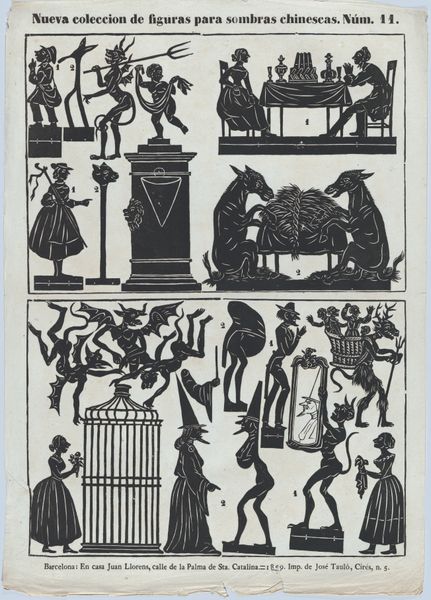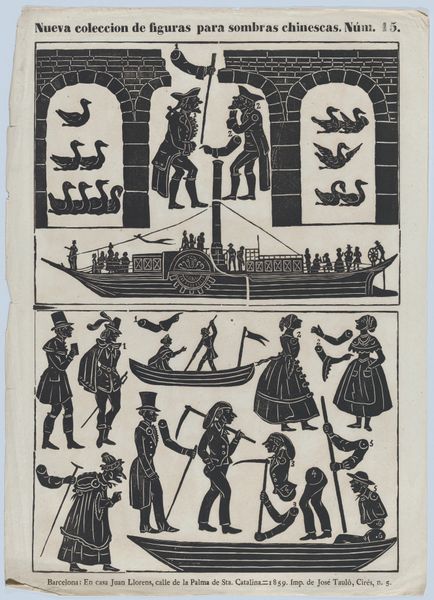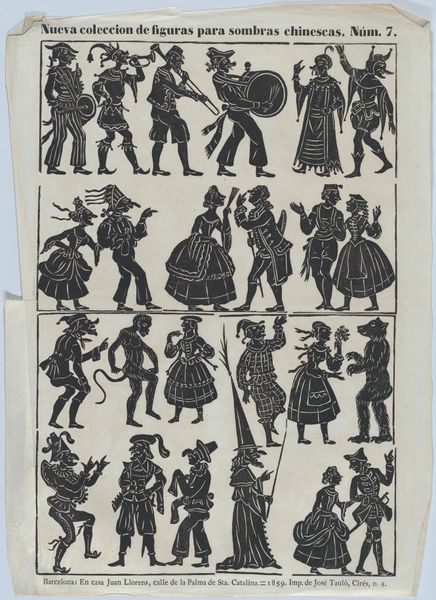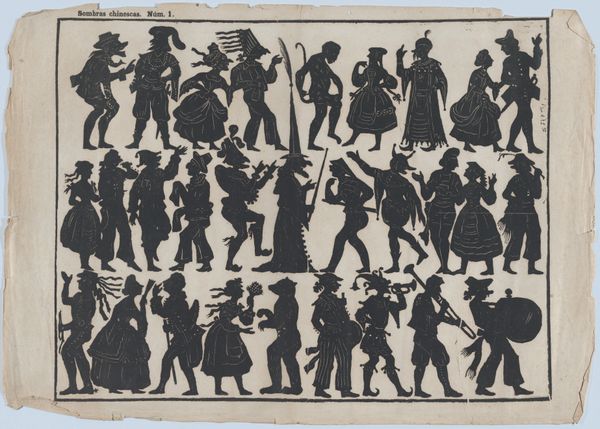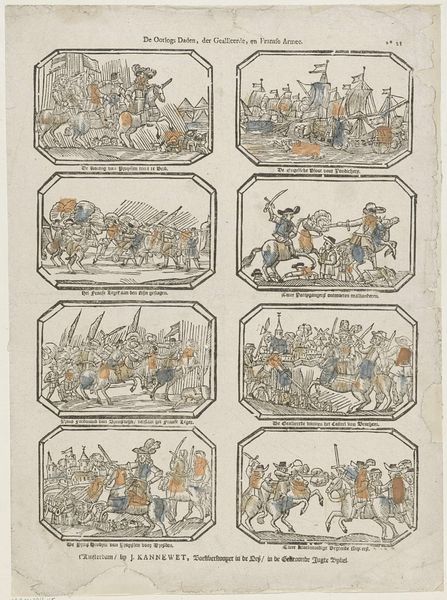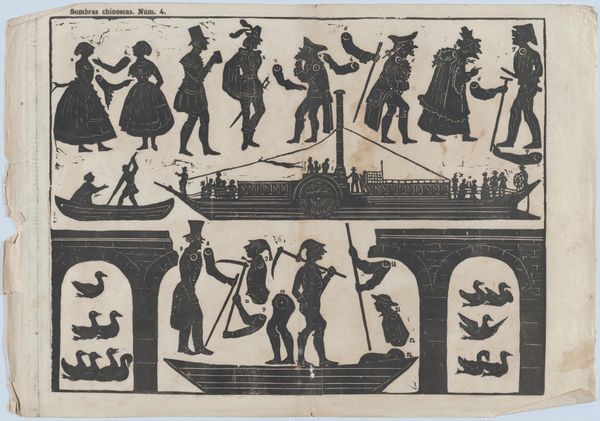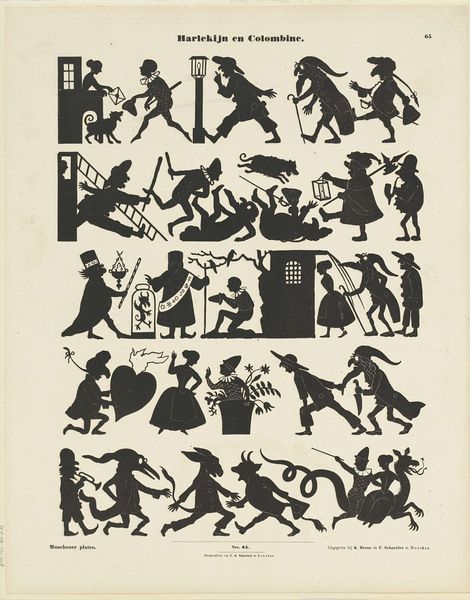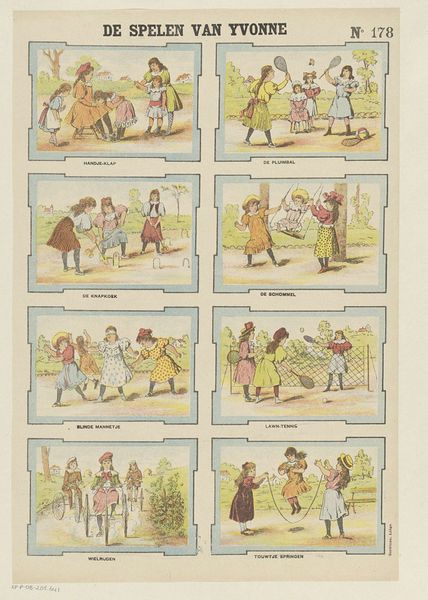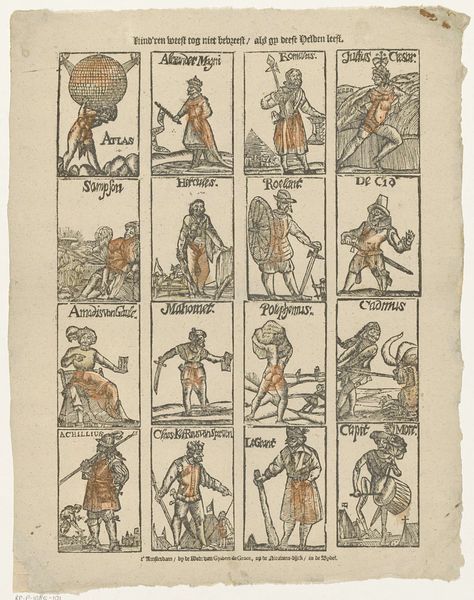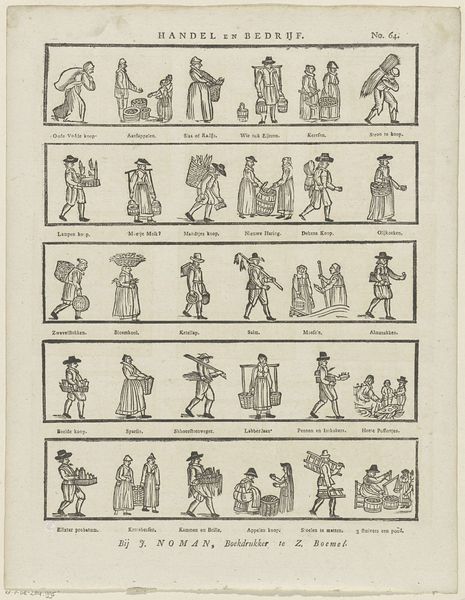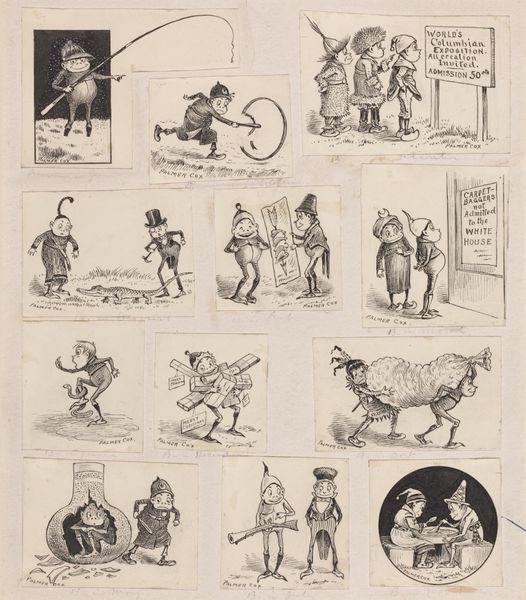
drawing, print, woodcut
#
drawing
#
street-art
#
narrative-art
# print
#
ukiyo-e
#
figuration
#
woodcut
#
genre-painting
#
history-painting
Dimensions: Sheet: 17 1/2 × 12 3/8 in. (44.5 × 31.5 cm)
Copyright: Public Domain
Curator: This intriguing sheet of figures, created in 1859, showcases a diverse array of characters intended for Chinese shadow puppets. Editor: It strikes me as quite vibrant despite the limited palette. There's a dynamic quality to these silhouetted figures. I imagine these in motion, part of a theatrical performance. Curator: Indeed. What draws my attention is how these figures echo archetypes. You have merchants, musicians, laborers. They reflect universal human roles. Look at the detail of their tools, their instruments – small signs laden with meaning about social life in mid-19th century Barcelona. Editor: I find myself questioning the cultural appropriation inherent in calling these figures for "Chinese shadow puppets" while being produced in Spain. It opens a conversation about how cultures adopt and adapt artistic traditions and potentially exoticize the culture of others, particularly within contexts of colonialism and trade. Curator: A fair point. But shadow puppetry transcends borders. It is ancient in multiple places, each carrying unique symbolic significance, but ultimately performing similar socio-cultural functions. Consider the light and shadow— darkness becoming story. These puppets are physical manifestations of potent symbols of society. Editor: True, but it’s essential to consider the social and political power dynamics at play. What narratives are being told with these puppets and for whose benefit? What audiences had access to these shows? These puppets served purposes beyond simple entertainment; they likely played into the era's class structures, gender norms, even racist stereotypes, through costuming, storylines, and voice acting. Curator: So you feel that understanding such context can allow us to have better understanding about people’s worldview back then. Fascinating. Editor: Precisely. It also provides us with the opportunity to reflect on our present biases as a society. Curator: It definitely allows us to better contemplate what constitutes progress when viewing the arts through social lenses. Editor: Exactly. And interrogating our response also helps us to appreciate better.
Comments
No comments
Be the first to comment and join the conversation on the ultimate creative platform.
